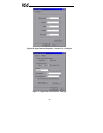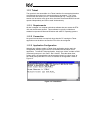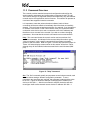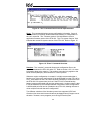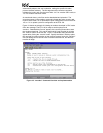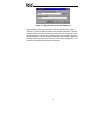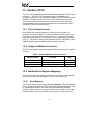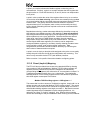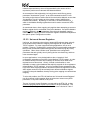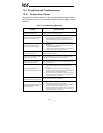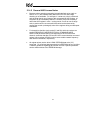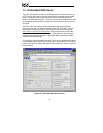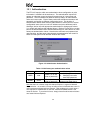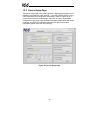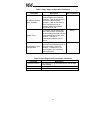
34
network response latency times will be extended by the amount of time
required to perform an on-demand ASD data transaction.
As an example of this relationship, let’s say that we would like to access
parameter “Acceleration Time #1” on an ASD connected to the ETH-100.
According to the relevant Toshiba Serial Communications Manual, we see that
“Acceleration Time #1” resides at drive register number 0x0009 (note
hexadecimal notation). By adding 1 to this value, we obtain 0x000A (10
10
),
which is the Modbus holding register that must be used to access this drive
parameter.
As mentioned above, direct mapping only applies when attempting to access a
Modbus register that is not
defined in the point database. If a specific Modbus
register is
defined in the point database, then the point database mapping
overrides direct mapping, and the actual ASD register accessed will depend on
the specific point’s configured sn number.
12.3.3 Universal Access Registers
Until now, our discussions about how to access ASD registers have primarily
revolved around the method of mapping ASD registers to unique Modbus
TCP/IP registers. For most control/monitoring applications, this is not a
problem. However, Toshiba ASD’s contain many more accessible parameters
than just the control/status parameters typically accessed during day-to-day
operations. Often, these “seldom used” parameters are configuration
parameters that are typically set only during device commissioning, and then
never accessed again.
In some applications, it may be desirable to take a “snapshot” of all
configuration parameters on an ASD via the Modbus TCP/IP network, in order
to create a backup file of the drive’s settings in case the drive needs to be
replaced at some future time. Clearly, it would not be feasible or even
desirable to create a point database that explicitly mapped all drive registers to
unique Modbus TCP/IP registers. It may be possible to take advantage of the
ETH-100’s direct mapping method to access all of the ASD registers, but some
ASD register numbers may have already been defined as Modbus register
numbers in the point database, thereby forcing point mapping to override direct
mapping.
To solve this problem, the ETH-100 defines two “Universal Access Registers”
per drive channel, which together allow asynchronous access to any ASD
parameter, on any ASD channel, at any time.
The two Universal Access Registers are reserved by the ETH-100, so they
cannot be programmed as a point’s pn number
in the point database. The
Universal Access Register numbers and functions are indicated in Table 2.



